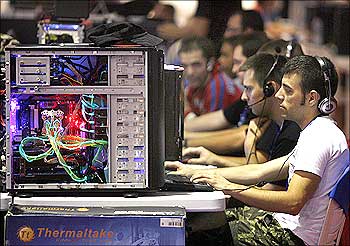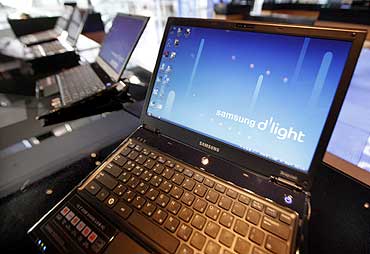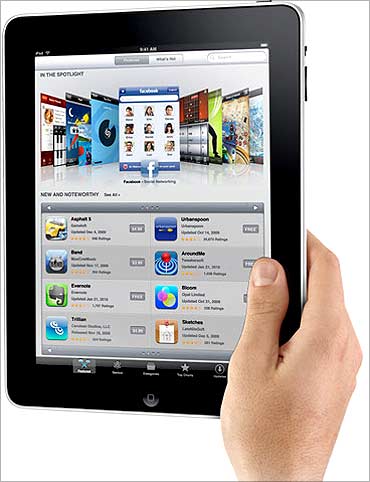 | « Back to article | Print this article |
Top 8 IT forecasts for 2011; cyber attacks to boom
The world's leading IT research and advisory firm Gartner has forecast that by 2015, online sabotages will become multi-modal and very damaging and that even a G-20 nation's critical infrastructure will be disrupted and damaged by such cyber attacks.
This was stated in 'Gartner's Top Predictions for IT Organisations and Users, 2011 and Beyond: IT's Growing Transparency' released on Tuesday.
"Such a multimodal attack can have lasting effects beyond a temporary disruption, in the same manner that the 9/11 had on the United States," it adds.
The forecast also says, "By 2015, new revenue generated each year by IT will determine the annual compensation of most CIOs across the world."
Analysts said that the predictions highlight the significant changes in the roles played by technology and IT organisations in business, the global economy and the lives of individual users.
Click NEXT to find out the top eight predictions . . .
The top 8 IT predictions for 2011, beyond
1. By 2015, a G20 nation's critical infrastructure will be disrupted and damaged by online sabotage
Online attacks can be multimodal, in the sense of targeting multiple systems for maximum impact, such as the financial system (the stock exchange), physical plant (the control systems of a chemical, nuclear or electric plant), or mobile communications (mobile-phone message routers).
Such a multimodal attack can have lasting effects beyond a temporary disruption, in the same manner that the September 11 attacks on the United States had repercussions that have lasted for nearly a decade.
If a national stock market was rendered unavailable for several weeks, there would be lasting effects even if there was no change in government, although it is also possible that such disruptive actions could eventually result in a change in leadership.
Click NEXT to read on . . .
The top 8 IT predictions for 2011, beyond
2. By 2015, new revenue generated each year by IT will determine the annual compensation of most new Global 2000 CIOs
Four initiatives -- context-aware computing, IT's direct involvement in enterprise innovation development efforts, pattern-based strategies and harnessing the power of social networks -- can potentially directly increase enterprise revenue.
Executive and board-level expectations for realising revenue from those and other IT initiatives will become so common that, in 2015, the amount of new revenue generated from IT initiatives will become the primary factor determining the incentive portion of new Global 2000 CIOs' annual compensation.
Click NEXT to read on . . .
The top 8 IT predictions for 2011, beyond
3. By 2015, information-smart businesses will increase recognised IT spending per head by 60 per cent
Those IT-enabled enterprises that successfully navigated the recent recession and return to growth will benefit from many internal and external dynamics.
Consolidation, optimization and cost transparency programs have made decentralized IT investments more visible, increasing 'recognised' IT spending.
This, combined with staff reduction and freezes, will reward the leading companies within each industry segment with an IT productivity windfall that culminates in at least a 60 per cent increase in the metric for 'IT spending per enterprise employee' when compared against the metrics of peer organisations and internal trending metrics.
Click NEXT to read on . . .
The top 8 IT predictions for 2011, beyond
4. By 2015, tools and automation will eliminate 25 per cent of labour hours associated with IT services
As the IT services industry matures, it will increasingly mirror other industries, such as manufacturing, in transforming from a craftsmanship to a more industrialised model.
Cloud computing will hasten the use of tools and automation in IT services as the new paradigm brings with it self-service, automated provisioning and metering, etc., to deliver industrialized services with the potential to transform the industry from a high-touch custom environment to one characterised by automated delivery of IT services.
Productivity levels for service providers will increase, leading to reductions in their costs of delivery.
Click NEXT to read on . . .
The top 8 IT predictions for 2011, beyond
5. By 2015, 20 per cent of non-IT Global 500 companies will be cloud service providers
The move by non-IT organisations to provide non-IT capabilities via cloud computing will further expand the role of IT decision making outside the IT organisation.
This represents yet another opportunity for IT organisations to redefine their value proposition as service enablers -- with either consumption or provision of cloud-based services.
As non-IT players externalize core competencies via the cloud, they will be interjecting themselves into value chain systems and competing directly with IT organisations that have traditionally served in this capacity.
Click NEXT to read on . . .
The top 8 IT predictions for 2011, beyond
6. By 2014, 90 per cent of organisations will support corporate applications on personal devices
The trend toward supporting corporate applications on employee-owned notebooks and smartphones is already under way in many organisations and will become commonplace within four years.
The main driver for adoption of mobile devices will be employees -- i.e., individuals who prefer to use private consumer smartphones or notebooks for business, rather than using old-style limited enterprise devices.
IT is set to enter the next phase of the consumerisation trend, in which the attention of users and IT organisations shifts from devices, infrastructure and applications to information and interaction with peers.
This change in view will herald the start of the post-consumerisation era.
Click NEXT to read on . . .
The top 8 IT predictions for 2011, beyond
7. By 2013, 80 per cent of businesses will support a workforce using tablets
The Apple iPad is the first of what promises to be a huge wave of media tablets focused largely on content consumption, and to some extent communications, rather than content creation, with fewer features and less processing power than traditional PCs and notebooks or pen-centric tablet PCs.
Support requirements for media tablets will vary across and within enterprises depending on usage scenario.
At minimum, in cases where employees are bringing their own devices for convenience, enterprises will have to offer appliance-level support with a limited level of network connectivity (which will likely include access to enterprise mail and calendaring) and help desk support for connectivity issues.
Click NEXT to read on . . .
The top 8 IT predictions for 2011, beyond
8. By 2015, 10 per cent of your online 'friends' will be non-human
Social media strategy involves several steps: establishing a presence, listening to the conversation, speaking (articulating a message), and, ultimately, interacting in a two-way, fully engaged manner.
Thus far, many organisations have established a presence, and are mostly projecting messages through Twitter feeds and Facebook updates that are often only an incremental step up from RSS feeds.
By 2015, efforts to systematize and automate social engagement will result in the rise of social bots -- automated software agents that can handle, to varying degrees, interaction with communities of users in a manner personalized to each individual.








